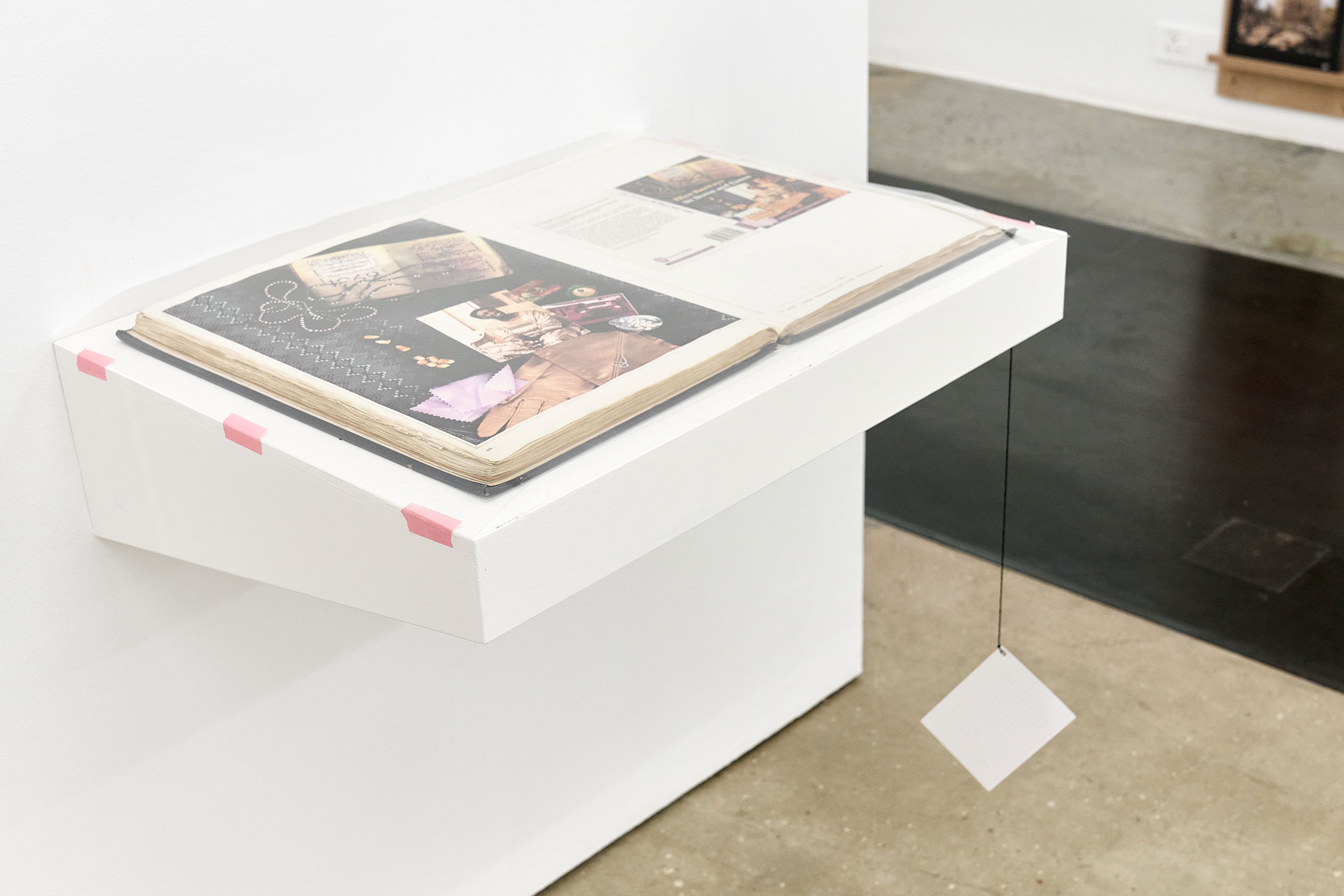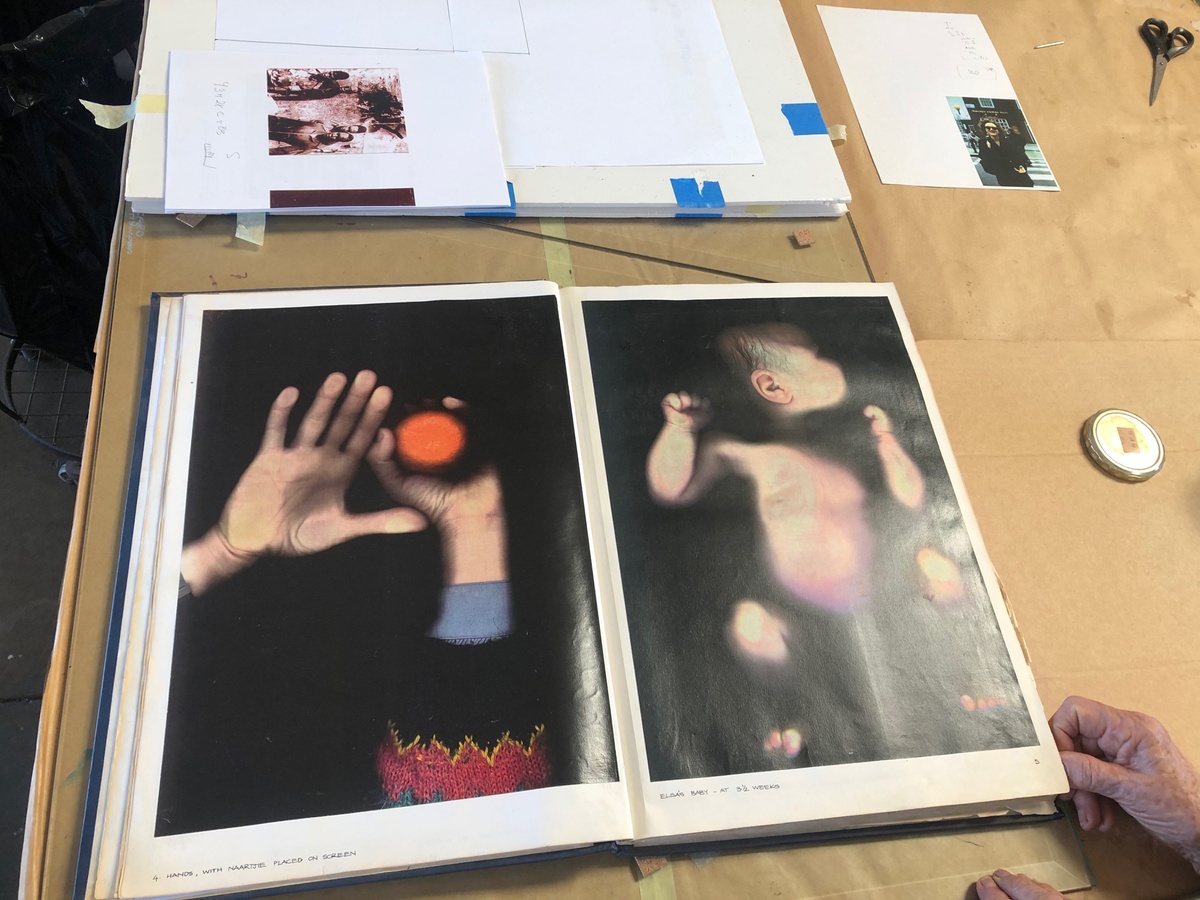Sue Williamson

In this, a bound book of colour photocopies of various subjects, Williamson’s commitment to historical veracity and her archival inclination for accumulation are apparent. Trained as a printmaker and journalist, Williamson found particular affinity in the photocopier: part printing press, part tape recorder. Acquiring the device in 1990 for a residency at the South African National Gallery, the photocopier was one of only three such copiers in Cape Town. To the artist, the luxury of its immediate results stood in sharp contrast to the long wait of shooting with film or making a screenprint. For Thirty Years Next to His Heart, Williamson’s record of the passbook of John Ngesi from the same year, was also on display in the exhibition Photo book! Photo-book! Photobook! at A4.
b.1941, Lichfield
In word, object and image, Sue Williamson gives to South Africa’s recent past a material reflection. Her commitment to historical verity is apparent in all her work, as is her archival inclination for accumulation. Trained as a printmaker and journalist – two disciplines that necessitate exactitude – there is to Williamson’s work a formal and conceptual rigour. Her early career in reportage has proved a lasting influence on her extended practice, instilling her preoccupation, the artist suggests, with “people’s exact words and precise narratives.” Williamson remains largely unconcerned with history’s overview, revisiting instead the stories of individual lives left untold. Using first- and second-hand accounts, found objects, photography and text, she returns to the nation’s history a more human expression.

